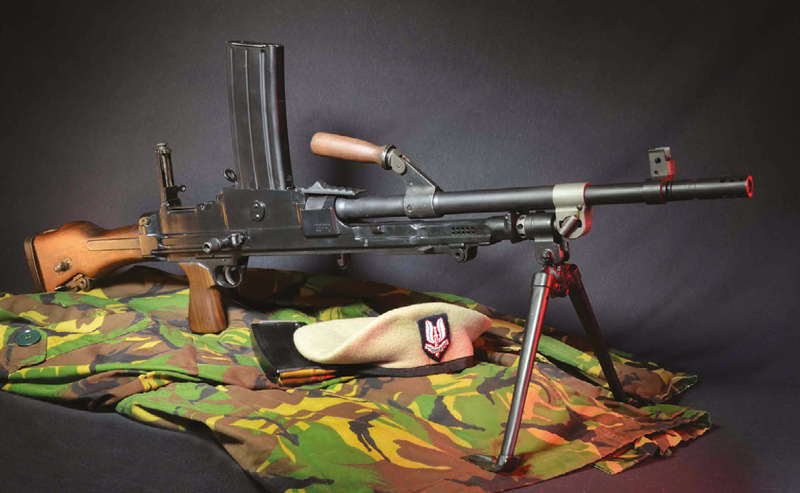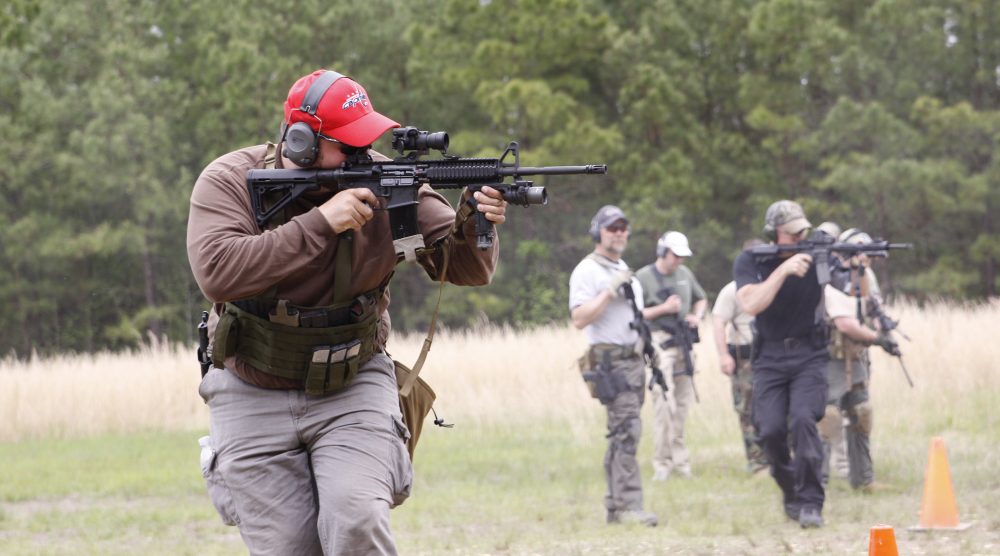A couple of months ago, I noticed a semi-auto Bren Gun on consignment in a local militaria/military gun shop. It was the .303 version used by British troops from World War II through some of the counterinsurgency wars of the postwar period. A version converted to 7.62x51mm NATO was used until the end of the 20th century.
Along with it were dozens of 30-round magazines. Price was $4,000, which seemed expensive until I mentioned it to a friend who has a semi-auto version. He told me it was actually a reasonable price. I wasn’t interested, but it did get me thinking about the Bren Gun.
The British adopted the Bren in the 1930s. It was based on the Czech ZGB 33 LMIG, with the Bren name taken from Brno, where the Czech factory was located.
Some modifications were made to suit the Bren to British needs, including a curved magazine to handle the .303 cartridge. Gas-operated, the Bren had a relatively low cyclic rate of about 500 RPM. A gas regulator allowed the flow to be adjusted for different temperatures—a useful feature for the British Army, which might fight in theaters as diverse as Arctic Europe, desert North Africa, or jungle Asia.




As initially produced, each Bren came with a quick-change barrel to aid when a barrel overheated from continuous firing. Because the Bren was magazine rather than belt fed, overheating was less of a problem. It fired from an open bolt.
The Bren was very well designed for firing from the prone position, since it had a bipod and top-loaded magazine, which allowed use of low cover. The flip-up sights were offset so the magazine did not block their use. These offset sights work effectively for a right-hander but would be difficult for someone who tries to fire the Bren off the left shoulder.
At 23 to 25 pounds with a loaded magazine, the Bren was more portable than many machine guns of the time. Skilled gunners could use it in the advance.
Bren Gunners were often chosen for their size to allow them to carry the weapon and spare magazines. Twoman teams normally operated Brens: the gunner and the loader, who carried additional magazines, a spare barrel, and a tool kit.
An interesting side note: The Bren was accurate enough that it could be used for “machine-gun sniping,” though the earliest versions were felt to have such a narrow field of fire that they did not make a good support weapon. Later versions had the cone of fire increased.
The Bren’s tactical use was similar to that of the U.S. Browning Automatic Rifle (BAR). Bren Gunners learned to take some care in loading the magazines, to make sure the rimmed .303 rounds did not overlap and cause misfeeds. Normally only 27 or 28 rounds were loaded per magazine.
I first encountered the Bren in use with British troops in the late 1960s, by which time they were using the versions that had been re-barreled to 7.62x51mm NATO and now designated the L4.
In addition to taking 30-round 7.62x51mm Bren magazines, this version also took the 20-round L1A1 SLR (FAL) magazines. The conical flash suppressor of the .303 model was also changed to a slotted one on the 7.62x51mm version.
I liked the Bren quite a bit. The top-load magazine and the fact that the weapon ejected downward made it excellent for use when firing prone from low cover.

It took time for me to get facile at magazine changes, which entail grabbing the magazine while depressing the magazine release flipper and rocking the empty mag free, then rocking a new magazine into place.
As used in combat, the loader would often do the mag change.
Slung, it could theoretically be fired from the hip when advancing. I never really shot it enough to become skilled at this technique and, even though I am relatively strong from a life spent pumping iron, I always found the Bren awkward and heavy. But I saw some hefty British Commando Bren gunners who were quite competent at this maneuver.
It’s been more than 25 years since I shot a full-auto Bren Gun, but a friend has a quality semi-auto 7.62x51mm Bren built by Len Savage of Historic Arms, and I’ve fired it a few times over the last few years. Other than firing it on semi-auto rather than full-auto, it still allows me the “experience” or “training,” depending on your point of view, of operating the Bren.
To be honest, I am somewhat conflicted in my views of semi-auto conversions of full-auto machine guns. In many cases, it is the only chance most shooters will have of owning and shooting some classic military arms. Other than judging the controllability, reliability, recoil, and accuracy of the weapon in sustained fire, the shooter can still learn what it’s like to use the weapon.
In many cases, semi-auto conversions are quite expensive, and getting the semi-auto version to function reliably can be problematic. For example, a transferable Bren Gun would probably sell for $30,000 or more, while a semi-auto kit gun could be built for a fraction of that price.
Many people I know who have semi-auto versions of light machine guns have had to return them to have problems corrected. On the plus side, reputable makers can usually fix the problems.
I’ve fired other semi-auto versions of light machine guns, including an M249 Para model. It sells for somewhere in the $8,500 range. That’s a lot of money for what is, in effect, a heavy belt-fed semi-auto rifle.
I’ve digressed from talking about the Bren Gun, but I do find the semi-auto versions of LMGs interesting and often instructive to shoot. In most cases, I have fired the military versions but don’t necessarily have ready access to them. I do think for a collector of modern military weapons—even those who buy transferable NFA weapons—the semis offer a way to fill gaps in the collection.
My conclusion is fairly simple: It is instructive and enjoyable to shoot many of the military weapons that were used in the conflicts of the 20th and 21st centuries. If one has the chance to use the military versions as a member of the armed forces, law enforcement, or Class III dealer, that is excellent. If not, the semi-auto versions offer at least part of the experience.
In fact, I asked my friend who owns the Historic Arms Bren to bring it along next time we go shooting, so I can put another couple hundred rounds through it.





